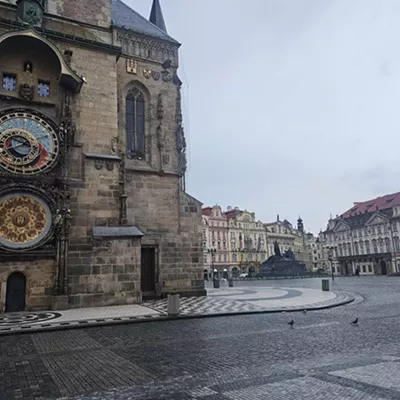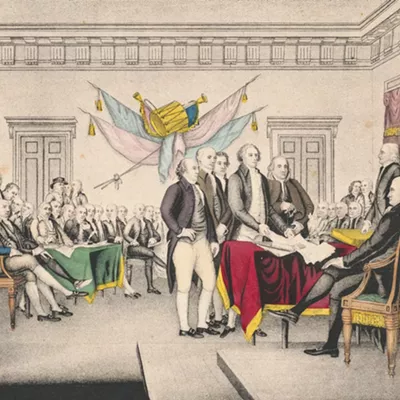Pvt. Joseph Collins, meantime, demonstrated to Clark an added dimension of his own when, on Oct. 21, he concocted a brew that Clark considered "excellent beer." Collins simply used old bread he had acquired at the Nez Perce camps nearly a month earlier. The bread was prepared from camas, an edible, starchy bulb that flourishes in Pacific Northwest meadows during the spring and summer. For more than two weeks it had been "frequently wet molded & amp; Sowered & amp;c." but it could still produce a satisfying liquid after being squeezed and filtered through mosquito netting. Clark was so impressed he even noted the location on his map.
After approximately 120 miles of swift but manageable water on the Columbia, the Corps of Discovery entered a stretch of river crowded with major obstacles to navigation. Just downstream from present-day Wishram, Wash., the canoes of the Corps of Discovery halted before the first of the obstructions, Wyam, or Celilo Falls. Lewis and Clark had missed the fall salmon run on the river, an event that made this location a magnet for several thousand people from a variety of regional tribes, so they never fully realized its significance until their return journey in 1806. What they did comprehend immediately was the danger and labor that would be required to pass across the falls.
The carrying of goods around the falls commenced on Oct. 22, with the heaviest articles being carried on Indian horses -- except for the canoes, which were too bulky. After two men of the expedition located the spot used by the Indians to take their canoes through several narrow channels, so too did the Corps of Discovery beginning the next morning. Sergeant Patrick Gass described the scene: "for three miles down, the river is so confined by rocks (being not more than 70 yards wide) that it cannot discharge the water, as fast as it comes over the falls, until what is deficient in breadth is made up in depth. About the great pitch the appearance of the place is terrifying, with vast rocks, and the river below the pitch, foaming through different channels." Nevertheless, by 3 pm all the canoes had made it safely through the foaming waters and were safe in camp. The maneuverability of the expedition canoes concerned Lewis, so that evening he exchanged the expedition's smallest canoe for a native one in consideration of a "Hatchet & amp; few trinkets." He believed the canoe to be "neeter made than any I have ever Seen and Calculated to ride the waves, and carry emence burthens."
Just three miles beyond Celilo Falls, an obstruction later named the Short Narrows of The Dalles halted the progress of the Lewis and Clark Expedition for the second time. Clark estimated the width of the channel at 45 yards. Two other journalists in the party thought it closer to 20 yards wide. After a quarter-mile, it widened to 200 yards. Portage was impossible. "I deturmined to pass through this place notwithstanding the horrid appearance of this agitated gut swelling, boiling & amp; whorling in every direction," proclaimed Clark. When the men of the expedition got through successfully, despite the raging waters, Clark sheepishly added an aside to his journal entry: "from the top of the rock [it] did not appear as bad as when I was in it ... we passed Safe to the astonishment of all the Inds."
The next day, the Corps confronted yet a third barrier in the Columbia: the Long Narrows of The Dalles. But by now the men of the expedition had a routine for passing such dangerous places. Clark "felt my Self extreamly gratified and pleased."
But also sad, because a day earlier Twisted Hair and Tetoharsky, their Nez Perce guides, asked permission of Lewis and Clark to return to their homelands, saying they could be of no further service. They knew nothing of the river below Celilo Falls and, besides, "the nation below had expressed hostile intentions ... perticularly as They had been at war with each other." The captains requested that the two Nez Perce stay with them through the Narrows, which they did. Then Twisted Hair and Tetoharsky purchased horses, turned them to the east, and began their journey home.
Next week: The last of the Columbia River's rapids.
Robert Carriker has directed eight National Endowment for the Humanities seminars on the Lewis and Clark expedition and is author of Ocean in View! O! the Joy. When he's not out retracing the steps of the Corps of Discovery, he teaches history at Gonzaga University.














